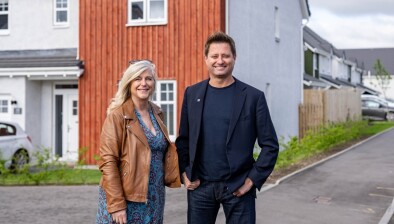Planning statistics prove system ‘is still slowing housing delivery’

Trade body Homes for Scotland (HFS) has said that the latest statistics on Scotland’s planning decision times further substantiates its claims that builders are finding it harder than ever to make a start on new sites and get much needed homes out of the ground.
Quarterly statistics on planning applications published yesterday revealed that the average decision time for local developments was faster than the equivalent quarter in the previous year, but that the average decision time for major developments was slower.
At 48.5 weeks, the time taken on planning decision times for major housing applications remains more than three times the statutory period of 16 weeks. In fact, for the period July to September in 2016/17, the time has actually slowed by a day from the previous quarter.
The news follows a report earlier this week that annual housing completion levels have effectively flatlined at an average of around 15,000 since 2010, still some 40 per cent below pre-recession levels, with a drop in the total number of homes being started.
HFS director of planning, Tammy Adams, said: “With today’s figures showing no improvement, slow planning decisions, together with complications relating to conditions and developer contributions, continue to be one of the main blockers to the delivery of housing.
“We know Ministers are not happy with current performance and that Scottish Government officials are looking at the root causes of the delays. Whilst we hope that the planning review will refocus the system and prioritise the delivery of enough new, high-quality homes to meet housing need, the truth is that we just can’t wait for that.
“There is an urgent need to get decisions out in good time, both on planning applications and appeals. If this doesn’t happen, the all-tenure housing crisis will only get bigger and this will be to the detriment of communities across Scotland.
“The Scottish Government is now consulting on increasing planning fees for major developments. Planning services clearly need to be properly resourced, but a fee hike will not be palatable unless there is a guarantee that performance will improve.”
In quarter two (July to September) of 2016/17 there were 6,684 decisions made on local developments, with an average decision time of 9.1 weeks. This was slower by one day compared with the previous quarter (8.9 weeks), but quicker by almost 4 days when compared to the equivalent quarter in the previous year (9.6 weeks), and is the quickest average time for quarter two since the start of this data collection in 2012/13.
For the 48 decisions made on major developments the average decision time was 44.8 weeks. This was more than 5 weeks slower than the previous quarter (39.3 weeks) and the slowest average decision time since the start of this data collection in quarter one of 2012/13.
Local developments include applications for household extensions and loft conversions etc, smaller housing and retail developments, as well as various other types of local developments.
Major developments include applications for developments of 50 or more homes, as well as certain waste, water, transport and energy-related developments, larger retail developments, and other types of major developments.
The overall rate of approvals for all types of application was 94.6 per cent in the period July to September 2016, an increase from the previous quarter (94.0 per cent), and the highest approval rate since the since the start of this data collection in quarter one of 2012/13.
















